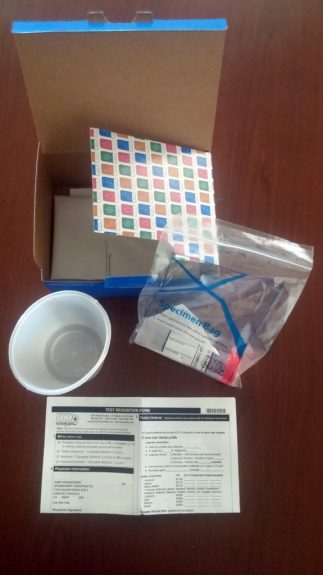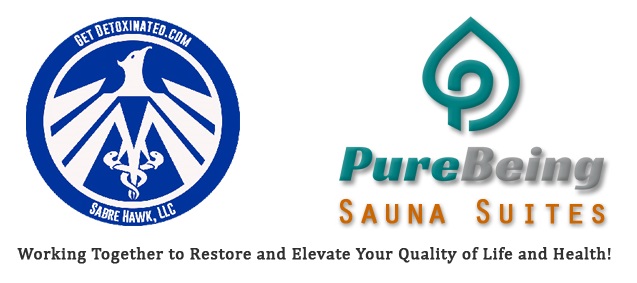Why I No Longer Recommend Pre- and Post-detox testing.
When it comes to detoxification, one of the most common methods to gauge success is through toxin testing. Whether it’s urine tests, provoked urine tests, stool tests, blood tests, or Hair Tissue Mineral Analysis (HTMA), these tests offer valuable insights into the various types of toxins in your body. However, many are surprised to find with post-detox testing that their reported toxin levels actually increase after undergoing a detox program. While this may seem counterintuitive, it’s often a sign that your body is doing exactly what it should be doing: eliminating toxins more efficiently.
The Paradox of Increased Toxin Levels Post-Detox
The expectation is simple: you detox to get rid of toxins, so post-detox levels should be lower, right? Not necessarily. An increase in toxin levels after detoxification can actually be a positive indicator. This is because the detox process often mobilizes toxins from storage sites in the body, such as adipose tissue, making them more detectable in tests.

The Overlooked Culprits: Chemical Xenobiotics
While heavy metals like mercury often steal the spotlight, it’s crucial to remember that chemical xenobiotics can also pose significant health risks. These chemicals, often found in everyday products, can disrupt hormonal balance, impair immune function, and more. The Detoxination® protocol aims to address not just heavy metals but also these often-overlooked chemical toxins.
The Science Behind It
The Detoxination® protocol uses a combination of niacin, exercise, and sauna to mobilize and eliminate toxins. Studies have shown that during lipid mobilization, toxic chemicals like DDT and its DDE metabolites, as well as PCBs, are also liberated from adipose tissues1 2. This is crucial to understand, especially since adipose tissue often serves as a reservoir for lipophilic xenobiotics and heavy metals3.
The Long-Term Benefits: A Case Study
Studies on the Hubbard Method4, which serves as the foundation for the Detoxination® protocol, have shown not just immediate but also long-term reductions in toxin levels. A four-month follow-up revealed an average reduction of more than 40% for all chemicals tested5. This suggests that the body continues to eliminate toxins long after the detox program has concluded.
Why Traditional Tests Can Be Misleading
Traditional tests measure what’s currently circulating in your bloodstream or being excreted, not what’s stored in your tissues. Therefore, these tests can be misleading when used as the sole metric for detoxification success. They capture a snapshot in time but don’t necessarily reflect the ongoing, dynamic process of detoxification.
The Role of Fat Biopsies and Blood Serum Tests in Measuring Body Burden
In our quest for a more accurate understanding of toxin levels in the body for our published studies, we incorporated both fat biopsies and blood serum tests into our methods. Fat biopsies offer a direct measure of toxins stored in adipose tissue, which often serves as a long-term storage site for various xenobiotics and heavy metals. Blood serum tests, on the other hand, provide information on what’s currently circulating in the bloodstream. By comparing the results of these two types of tests, we can gain a comprehensive view of both the immediate and stored levels of toxins in the body. This dual approach allowed us to more accurately assess the effectiveness of the Hubbard Method in reducing the overall body burden of toxins.
The Importance of Context
It’s essential to interpret these test results in the broader context of your overall health and detoxification process. For a more comprehensive view, consider additional tests that measure the function of key detoxification organs like the liver and kidneys. These organs play a pivotal role in processing and eliminating toxins, and their functionality can offer more insights into your detox journey.
Conclusion
While it may be initially alarming to see an increase in toxin levels after a detox program, it’s often a sign that your body is more efficiently mobilizing and eliminating stored toxins. As with any health journey, it’s crucial to consult with qualified healthcare professionals for a comprehensive understanding of your detox process.
 Click here to learn more about our Testimonials and Results Disclaimer
Click here to learn more about our Testimonials and Results Disclaimer
Disclaimer: Information on this web site is provided for informational purposes only. The information is a result of years of practice experience by the authors. This information is not intended as a substitute for the advice provided by your physician or other healthcare professional or any information contained on or in any product label or packaging. Do not use the information on this web site for diagnosing or treating a health problem or disease, or prescribing medication or other treatment. Always speak with your physician or other healthcare professional before taking any medication or nutritional, herbal or homeopathic supplement, or using any treatment for a health problem. If you have or suspect that you have a medical problem, contact your health care provider promptly. Do not disregard professional medical advice or delay in seeking professional advice because of something you have read on this web site. Information provided on this web site and the use of any products or services purchased from our web site by you DOES NOT create a doctor-patient relationship between you and any of the physicians affiliated with our web site. Information and statements regarding dietary supplements have not been evaluated by the Food and Drug Administration and are not intended to diagnose, treat, cure, or prevent any disease.

